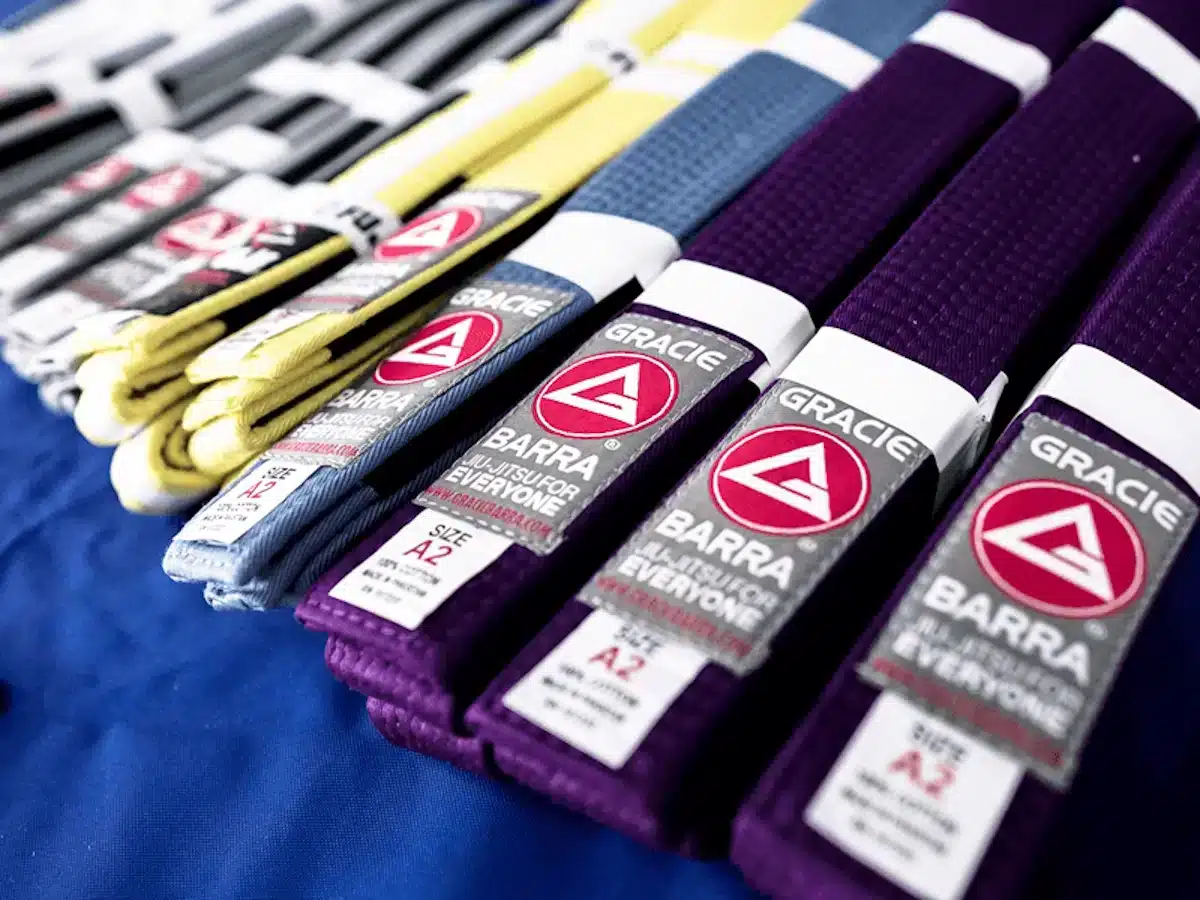Catch-as-catch-can Wrestling is an intriguing blend of technique and tradition that has long been a cornerstone in martial arts. It traces its lineage back to the gritty landscapes of Lancashire, England. This grappling practice is distinguished by its permissive approach to submissions and holds, which challenges the physical prowess of its practitioners and demands a deep tactical acumen.
As we explore the evolution of Catch Wrestling from its rudimentary beginnings to its present-day application in combat sports and self-defence, one might wonder how this historic discipline continues to influence contemporary grappling techniques and what lessons its distinguished practitioners can teach us.
Key Takeaways
- Catch As Catch Can Wrestling, from England, emphasizes quick submissions and control with techniques like the Arm Bar and Double Wrist Lock.
- Legends such as Billy Robinson and Karl Gotch have significantly influenced modern grappling techniques and the sport’s revival.
- Organizations like Snake Pit U.S.A. promote Catch-As-Catch-Can Wrestling, integrate its techniques into MMA, and offer comprehensive training opportunities.
- Catch-as-catch-can Wrestling benefits include improved grappling performance, physical conditioning, and mental toughness, suitable for competitive and self-defence scenarios.
Table of Contents
Why Catch As Catch Can Wrestling?
Catch-as-catch-can Wrestling or just Catch Wrestling is a formidable choice for those seeking practical self-defence and combat sports skills. Owing to its focus on effective pinning and aggressive submission techniques, this style is distinctively suited for real combat situations, emphasizing a blend of practical and aggressive submission holds.
Originating from England, Catch Wrestling’s unique combination of American and English wrestling philosophies contributes to its effectiveness in producing well-rounded grapplers. Moreover, the structured skill levels offered through certification programs in Catch Wrestling enable enthusiasts and professionals alike to systematically enhance their technical knowledge and proficiency.
This approach ensures that practitioners are capable of executing aggressive submissions and well-versed in the style’s strategic nuances, making grappling an invaluable discipline for those committed to mastering the art.
Men’s Bold Champion Spirit of Jiu-Jitsu Rash Guard
Our Bold Champion Spirit of Jiu-Jitsu Rash Guard broadcasts your commitment to the art of Jiu-Jitsu while the golden figures locked in combat pay homage to the timeless spirit of competition.
What is Catch As Catch Can Wrestling?
Building on the foundations of its practical application in self-defence and combat sports, Catch As Catch Can Wrestling, also known as just Catch, emerges as a distinct and venerable wrestling style with roots in Lancashire, England. This form of wrestling is distinguished by its aggressive approach to submissions and an emphasis on a broad spectrum of wrestling techniques.
Catch As Catch Can Wrestling has historically served as the ancestor of modern professional wrestling and mixed martial arts, highlighting its significant influence and adaptability across combat sports. Originating in the competitive and spirited environment of Lancashire, it prioritizes quick submissions and control and employs a diverse array of grappling techniques to dominate opponents.
This aggressive style ensures a comprehensive and dynamic combat experience, making it a foundational pillar in the evolution of wrestling and mixed martial arts.
Catch Wrestling: Evolution of Combat
Catch Wrestling has long been a crucible for developing and refining combat techniques. Its lineage is traced to the rugged and improvisational catch-as-catch-can style. This martial art, a cornerstone in the evolution of modern combat sports, has seamlessly woven its legacy through the professional realms and the Olympics, thereby shaping the landscape of competitive fighting.

Supreme-Inspired Wrestling T-shirt
Unleash your passion with our Supreme logo-inspired tee! Crafted for comfort and style, this 100% cotton t-shirt features a bold ‘wrestling’ design on a vibrant red background. Lightweight, pre-shrunk, and meticulously constructed, it’s the perfect blend of durability and softness. Elevate your wardrobe and showcase your love for wrestling with this standout tee. Ideal for…
Its influence on contemporary disciplines such as Sambo and Mixed Martial Arts (MMA) underscores the enduring relevance of Catch As Catch Can Wrestling’s principles and methodologies. Yet, examining its trajectory from carnival sideshows to global championships, one might ponder how its historical ethos resonates within today’s martial arts community.
Historical Roots and Global Spread
Tracing its origins to the catch-as-catch-can style, catch wrestling emerged as a distinctive and influential form of combat sport, captivating audiences worldwide with its blend of technique and tenacity. This grappling art form saw its genesis in the carnival exhibitions of the late 19th and early 20th centuries, where it quickly became a staple attraction.
Wrestlers from diverse backgrounds converged on these platforms, showcasing their prowess and contributing to the rich tapestry of catch wrestling’s evolution. The international champions who emerged from these contests underscored the sport’s global appeal and competitive depth.
These exhibitions not only served as a crucible for talent but also as a linchpin in disseminating catch wrestling, fostering a network of practitioners and aficionados that spanned continents.

Rules, Techniques, and Olympics
Building upon the rich tapestry of its historical roots and global spread, catch wrestling’s rules and techniques and its inclusion in the Olympics mark significant milestones in the sport’s evolution and formalization.
The Olympic legacy of catch wrestling, initiated in the 1904 Summer Olympics, underscored the sport’s global appeal and the effectiveness of its rules and techniques. These competitions were governed by regulations emphasizing submission strategies, allowing holds anywhere on the opponent’s body but typically barring chokeholds.
This framework laid the groundwork for what would evolve into modern freestyle wrestling, amplifying the sport’s focus on pinning and submission techniques. Codifying catch wrestling rules not only standardized the sport but also ensured its enduring influence on the combat sports landscape, highlighting its strategic depth and physical rigour.
Professionalization and Modern Influence
The transition from traditional catch wrestling to professional wrestling in the 1920s marked a pivotal shift towards entertainment-focused bouts, significantly influencing the sport’s perception and execution. This evolution introduced scripted matches and dramatic storylines, fundamentally altering the catch wrestling landscape.
Yet, the essence of catch wrestling’s techniques and principles survived, finding new life through modern adaptations and MMA integration. Today, the influence of catch wrestling is unmistakable in the world of mixed martial arts, where its techniques enrich fighters’ arsenals.
The professionalization of catch wrestling has not only preserved its legacy. Still, it has also allowed it to evolve, seamlessly integrating into contemporary combat sports and ensuring its relevance and application in today’s competitive fighting environment.
Catch As Catch Can Wrestling Techniques
Entering catch wrestling, one discovers a rich arsenal of techniques, including the armbar, Japanese arm bar, hammerlock, wrist lock, and the renowned double wrist lock, better known as the Kimura in modern mixed martial arts. These techniques are pivotal for athletes aiming for submission wins in catch wrestling tournaments. The focus is on achieving dominant positions, allowing for the application of joint locks and forcing opponents into submission.
| Technique | Purpose |
|---|---|
| Arm Bar | Submits the opponent by hyperextending the elbow |
| Japanese Arm Bar | Similar to the arm bar but with a different grip |
| Hammerlock | Immobilizes the opponent’s arm, applying pressure on the shoulder |
| Wrist Lock | Controls the opponent by twisting the wrist |
| Double Wrist Lock (Kimura) | A powerful joint lock targeting the shoulder, offering control and submission opportunities |

Notable Catch Wrestling Practitioners
Notable practitioners of Catch Wrestling, such as Zack Sabre Jr., Kazushi Sakuraba, and the Shamrock brothers, have significantly impacted the technique’s evolution and visibility in the competitive arenas of mixed martial arts and professional wrestling.
Zack Sabre Jr. is celebrated for his innovative submissions and technical excellence, embodying the essence of Catch Wrestling in modern professional wrestling. Kazushi Sakuraba, dubbed the ‘Gracie Hunter,’ utilized Catch Wrestling effectively against Brazilian Jiu-Jitsu fighters, showcasing its potency in MMA.
Ad Santel’s legendary victories over Judo practitioners in the early 20th century underscored Catch Wrestling’s effectiveness. Meanwhile, pioneers like Frank Shamrock and Ken Shamrock incorporated Catch Wrestling principles into their formidable MMA arsenals, further solidifying its reputation as a foundational combat sports discipline.
Model the Best Catch Wrestlers
Emulating the techniques and strategies of Catch Wrestling legends such as Billy Robinson and Karl Gotch can significantly enhance an individual’s grappling proficiency and understanding of the sport. These distinguished figures in catch wrestling have set a standard in applying grappling techniques, demonstrating the sport’s effectiveness in both competitive and self-defence scenarios.
Through organizations like Snake Pit U.S.A., practitioners have access to a wealth of knowledge and training methods rooted in the teachings of Robinson, Gotch, and other pioneers. The emphasis on a no-nonsense approach, focusing on practical, efficient submissions and pins, underscores the adaptability and relevance of catch wrestling techniques in modern combat sports and real-life defence situations.
Learning from these masters offers invaluable insights into refining one’s grappling skills.
Become A Better Grappler with Catch Wrestling
Mastering Catch Wrestling techniques can significantly elevate an individual’s grappling performance, offering a strategic advantage in competitive settings and self-defence scenarios. Originating from the Lancashire style, this discipline’s aggressive grappling techniques and comprehensive approach to standing and ground skills cater to a broad spectrum of combat sports.

The legacy of Billy Riley’s Snake Pit underscores the profound impact of Catch Wrestling on the development of Olympic freestyle wrestling and Judo, highlighting its foundational role in the grappling world. Moreover, the Mixed Martial Arts boom has reinvigorated interest in this versatile discipline, showcasing its effectiveness in modern combat.
Emphasizing quick transitions, strategic positioning, and a blend of American and English wrestling techniques, Catch Wrestling prepares individuals to excel across various grappling situations.
Starting Your Journey as a Catch Wrestler
Embarking on a journey as a Catch Wrestler requires dedication, a willingness to learn, and access to quality training resources. This path involves immersing oneself in the unique blend of American and English wrestling philosophies, emphasizing aggressive takedowns and submissions.
Training in catch wrestling enhances grappling skills and prepares the individual for various levels of certification, demonstrating their technical proficiency and commitment to the sport. Moreover, conditioning plays a critical role, with routines focusing on takedowns, throws, and ground-based techniques. This ensures a wrestler’s fitness matches their technical skills.
Where to Learn Catch Wrestling?
For those interested in pursuing catch wrestling, Snake Pit U.S.A. Catch Wrestling Association offers comprehensive training across various locations. This organization stands at the forefront of preserving and teaching the ancient art of catch wrestling, providing enthusiasts and athletes with a well-structured path to mastery.
Their training programs are designed under the guidance of catch wrestling legends, ensuring that students learn the techniques, philosophy, and history behind this grappling style. Participants have the unique opportunity to test their skills at catch wrestling events organized by Snake Pit U.S.A., allowing them to experience the competitive aspect of the sport.
Moreover, members can access many resources, including historical photos and instructional materials, to deepen their understanding and appreciation of catch wrestling.
Frequently Asked Questions
What Does Catch as Catch Can Mean?
The phrase “catch as catch can” broadly signifies utilizing whatever means or opportunities are available in a given situation, emphasizing adaptability and using available resources or methods to achieve an objective.
Where Did Catch as Catch Can Come From?
The term originates from Lancashire, England, during the British Empire, reflecting a philosophy of utilizing any available means to achieve a goal. This approach has been applied across various disciplines, including sports and combat techniques.
Can You Pin in Catch Wrestling?
In wrestling, the ability to pin an opponent is fundamental. Pinning, which involves holding an opponent’s shoulders on the mat for a specified duration, is a permissible and strategic victory method.
Where Can I Study Catch Wrestling?
For individuals interested in studying wrestling techniques and grappling skills, Snake Pit U.S.A. Catch Wrestling Association offers comprehensive training across various locations governed by a dedicated Board of Directors and enriched by a storied lineage.
Conclusion
In conclusion, catch-as-catch-can wrestling is a comprehensive grappling art with deep roots in Lancashire, England. Its emphasis on technical prowess, aggressive takedowns, and submissions without the restriction of illegal holds makes it a formidable discipline within the martial arts community.
The style promotes a holistic approach to grappling, encouraging practitioners to pursue continuous learning and skill certification. With its rich heritage and modern adaptations, Catch Wrestling offers a unique and practical framework for individuals aiming to master the art of grappling.


























